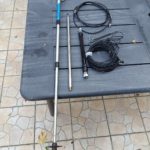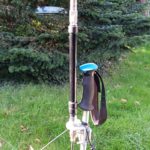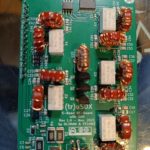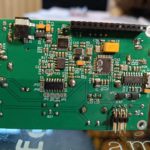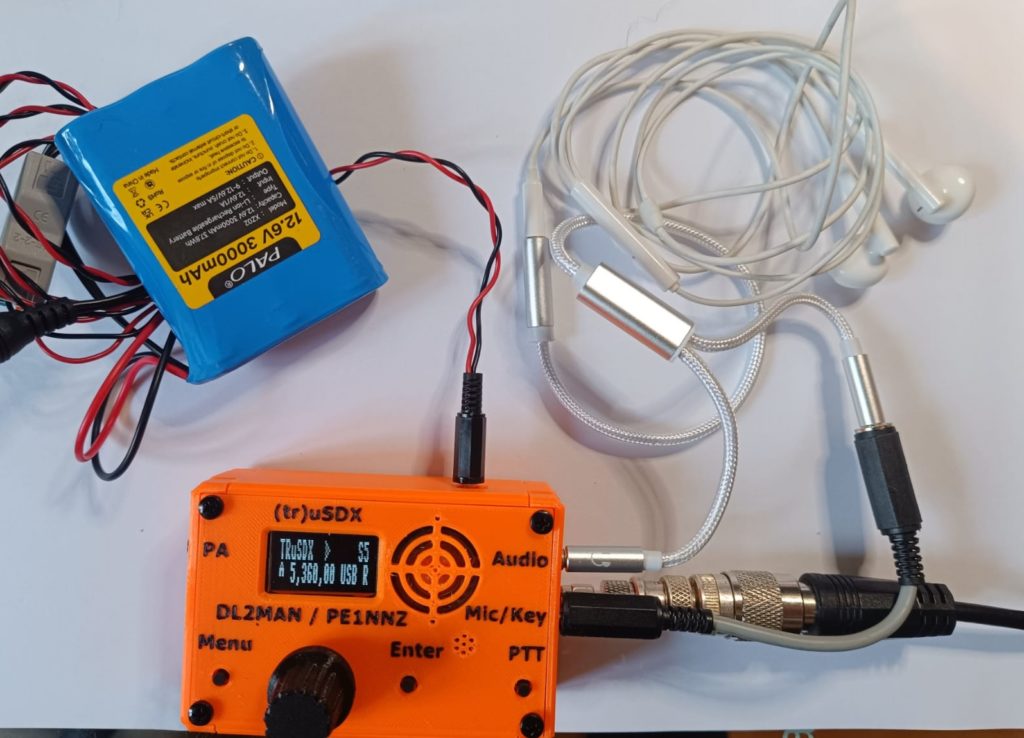
For the past few weeks, I’ve acquired a portable transceiver (TR) uSDX, which allows me to operate in QRP with a power output of 5 watts on the 80 m, 60 m, 40 m, and 30 m bands. I power this small transceiver with a 12V rechargeable lithium battery rated at 3000 milliamp-hours. I also added an earphone kit to enjoy more comfortable listening during POTA (Parks On The Air) and SOTA (Summits On The Air) activities. I later upgraded to a higher-quality and more comfortable headset with a microphone.
As for the antenna, which is over 6 meters long, I adapted the HF Pro 2 antenna base to fit a 5.6-meter telescopic antenna. The M10-1.5 to M10-1 adapter was made by welding a nut at high temperature onto an M10-1.5 spacer adapter purchased from a nearby store.
The antenna support is simply a hiking pole with a base mount bought online. Attached to this base are three 2.5 mm² black GND wires, which serve both to guy the pole and to provide sufficient counterpoise (ground). At each point where the wire is held to the ground with a metal camping tent peg, the insulation has been stripped off to ensure better contact with the soil, while the rest of the wire runs along the ground.
This setup is extremely lightweight and compact—it fits easily at the bottom of a backpack, alongside water bottles and snacks.
This economical and compact solution helps reduce the overall weight of the equipment, making it easier to carry, especially when hiking up mountains for SOTA activations.

FR-3053
November 1st, 2025
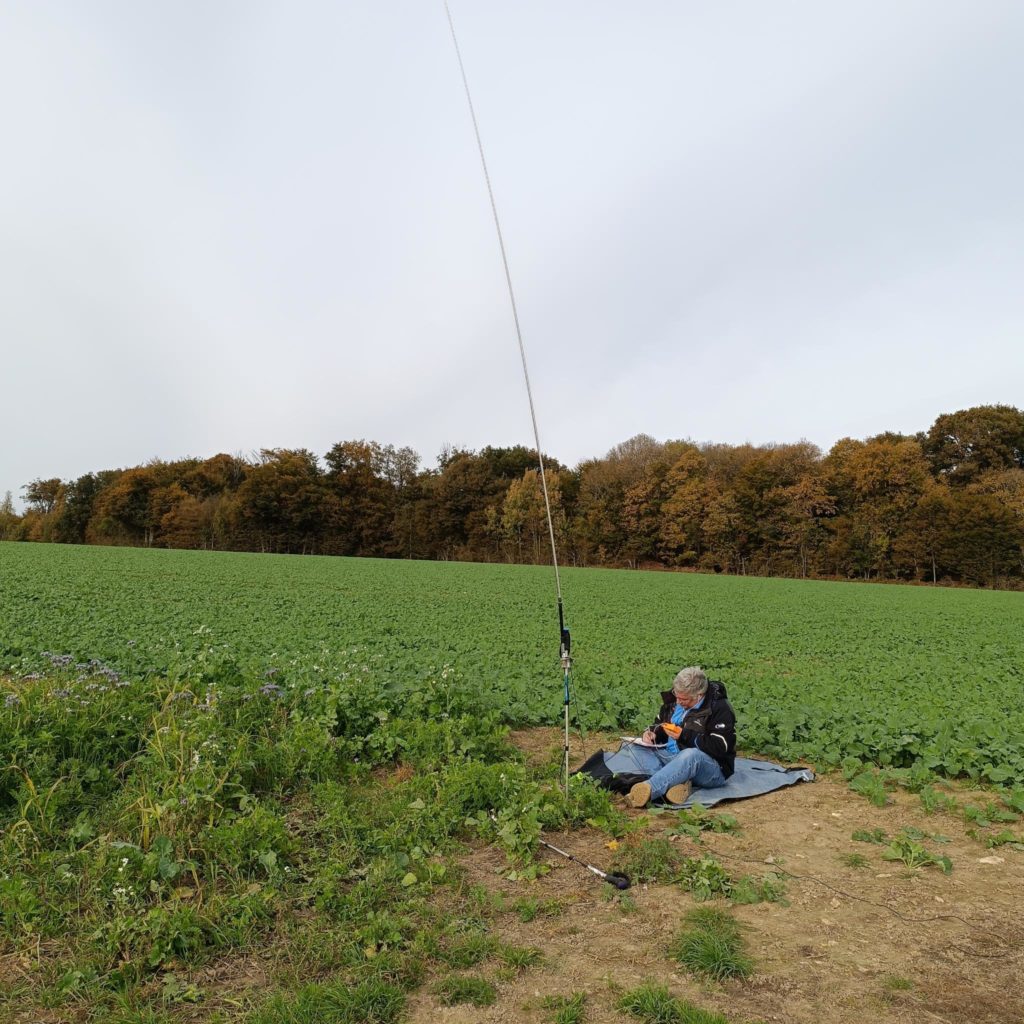

Cuesta du Bray FR2200371 Natura 2000
======== En Français – In French ==========
Depuis quelques semaines, j’ai fait l’acquisition d’un émetteur-récepteur portable (TR) uSDX, qui permet de trafiquer en QRP avec une puissance de 5 watts sur les bandes 80 m, 60 m, 40 m et 30 m.
J’alimente ce petit transceiver avec une batterie lithium rechargeable de 12 V / 3000 mAh.
J’ai également ajouté un kit oreillette afin de bénéficier d’un meilleur confort d’écoute lors des activités POTA (Parks On The Air) et SOTA (Summits On The Air).
Plus récemment, j’ai remplacé ce kit par un modèle avec microphone de meilleure qualité, plus confortable et plus performant.
Concernant l’antenne, d’une longueur de plus de 6 mètres, j’ai adapté l’embase de l’antenne HF Pro 2 afin d’y fixer une antenne télescopique de 5,6 m.
L’adaptation M10-1,5 vers M10-1 a été réalisée grâce à un écrou soudé à haute température sur l’adaptateur entretoise M10-1,5, acheté dans un magasin à proximité de chez moi.
Le support d’antenne n’est autre qu’un bâton de marche sur lequel est fixée une embase achetée sur Internet.
Sur cette embase sont connectés trois fils de masse (GND) noirs de 2,5 mm², qui servent à haubaner le bâton tout en assurant un bon contrepoids (terre).
À chaque point d’ancrage au sol, où les câbles sont maintenus par un piquet de tente métallique, la gaine a été dénudée pour garantir un meilleur contact avec le sol.
Le reste du fil court simplement le long du terrain.
Cette installation est très légère, compacte, et tient au fond du sac à dos, entre les gourdes et les casse-croûtes.
Cette solution économique et compacte permet d’alléger le matériel, ce qui facilite grandement le portage, notamment lors des ascensions pour activer des SOTA.

